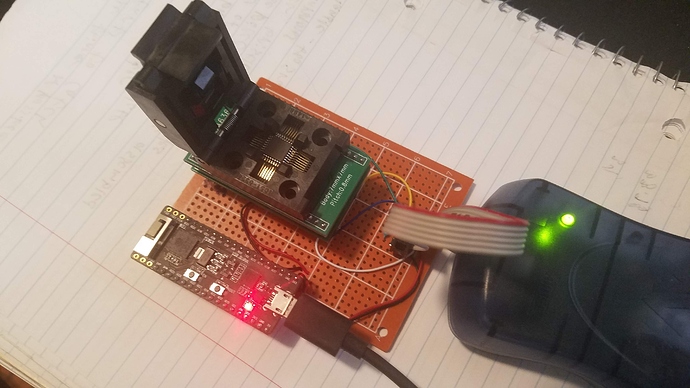I currently have a project where I’m using an Atmega328PB in a TQFP package to act as a customized i2c port expander for the main microcontroller. Since the firmware on this is pretty simple and shouldn’t ever need to change I figured I shouldn’t need to put a programming port on the PCB. Of course, that meant I would need to program them before soldering, so I searched around and found this thing. I put together the programming circuit on some perf board, and now I can just pop the chips in, program them all, and have them ready for soldering. I hadn’t seen a socket like this for a TQFP package before, so I thought I’d share.
I don’t quite understand the reasoning for the stacked PCBs; the resulting layout is super awkward to use with a breadboard, and there are 8 extra pins that aren’t connected to anything. I might put together a more logical PCB layout for it in the future, but for now it is functional despite its quirks.
